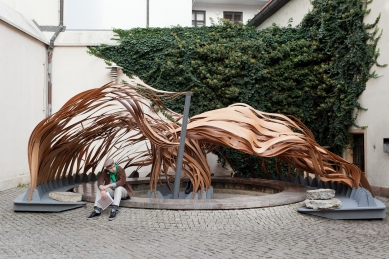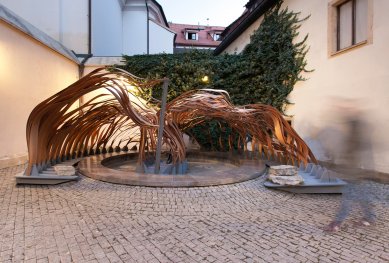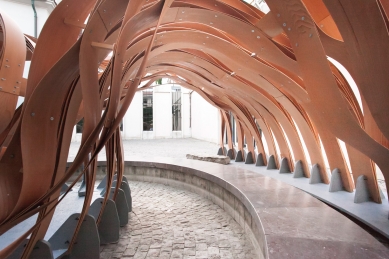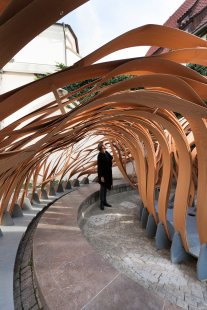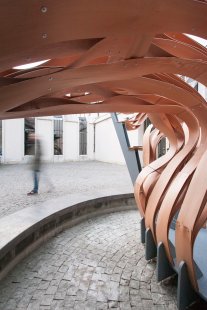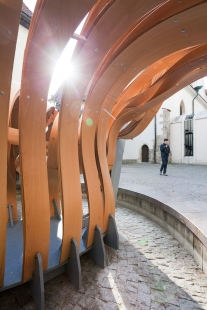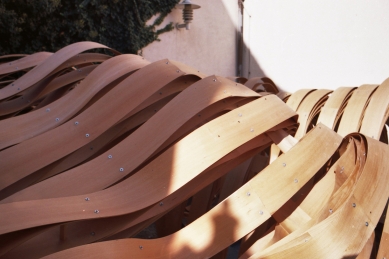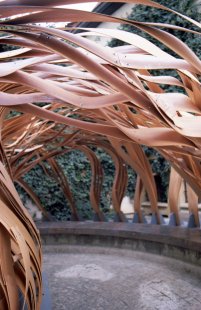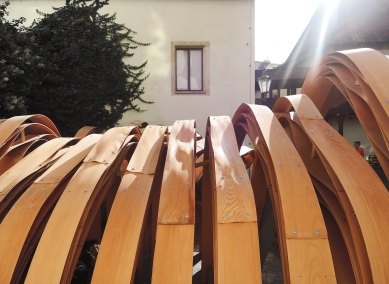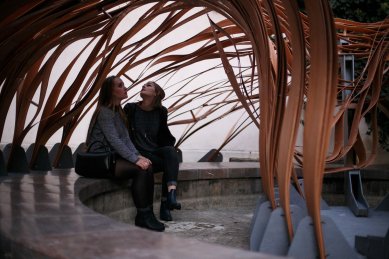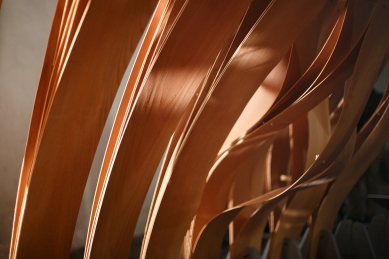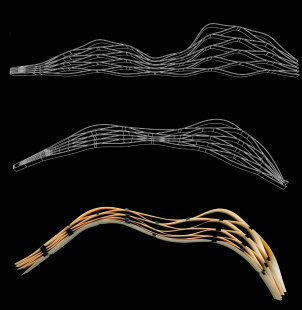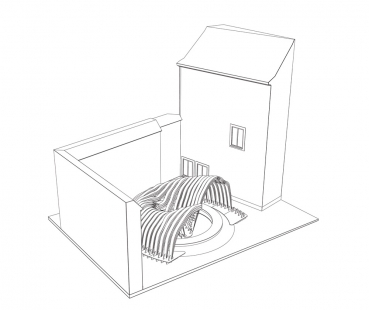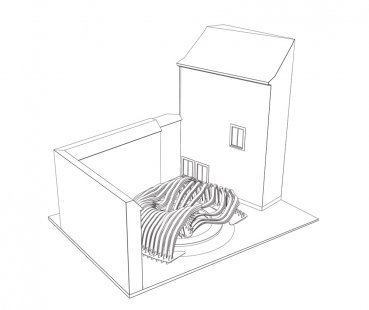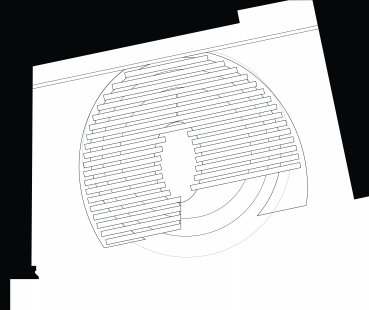
Experimental Pavilion OAA 2016
Programmed bending - research pavilion of atelier A3 from UMPRUM

Programmed bending is a strategy that provides the opportunity to achieve complex geometries from simple standardized elements using computational design methods. Through irregular layering of veneer strips, the author programs the subsequent bending of the structure, which shapes itself into an optimal form. The combination of bent and stretched elements retains tension, contributing to increased stiffness of the structure.
The project tests the potential of this strategy and applies it in the design of a pavilion located around the Bethlehem Chapel. The spatial layout of the pavilion responds to the shape of the fountain and together forms a unified composition. The overall shape of the structure is defined by a programmed combination of the used elements, but it is not entirely predictable, as its parts are exposed to weather influences to varying degrees. Natural changes and deformations, characteristic of the material used, beech veneer, are not undesirable; on the contrary, they determine the behavior of the entire structure. Flexible anchoring of individual elements allows for gradual deformation of the pavilion parts due to environmental changes.
The geometry of the pavilion arises from simple rules confronted with the unpredictable influence of the environment. The employed methods allow for the highlighting and strengthening of the material's irregularities and their projection onto the overall architectural design. Thus, the pavilion bears characteristics of emergent architecture, architecture that is designed not through a notation system (floor plan, elevation, section) but through rules (computer code), the shape of which is defined only in the process of building or use.
The project tests the potential of this strategy and applies it in the design of a pavilion located around the Bethlehem Chapel. The spatial layout of the pavilion responds to the shape of the fountain and together forms a unified composition. The overall shape of the structure is defined by a programmed combination of the used elements, but it is not entirely predictable, as its parts are exposed to weather influences to varying degrees. Natural changes and deformations, characteristic of the material used, beech veneer, are not undesirable; on the contrary, they determine the behavior of the entire structure. Flexible anchoring of individual elements allows for gradual deformation of the pavilion parts due to environmental changes.
The geometry of the pavilion arises from simple rules confronted with the unpredictable influence of the environment. The employed methods allow for the highlighting and strengthening of the material's irregularities and their projection onto the overall architectural design. Thus, the pavilion bears characteristics of emergent architecture, architecture that is designed not through a notation system (floor plan, elevation, section) but through rules (computer code), the shape of which is defined only in the process of building or use.
Shota Tsikoliya
The English translation is powered by AI tool. Switch to Czech to view the original text source.
0 comments
add comment




